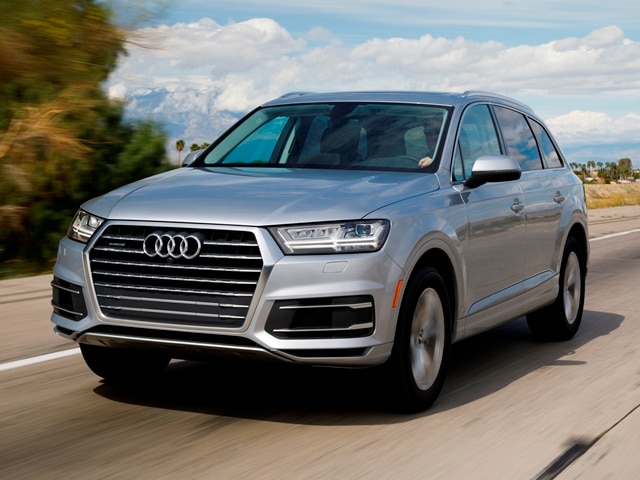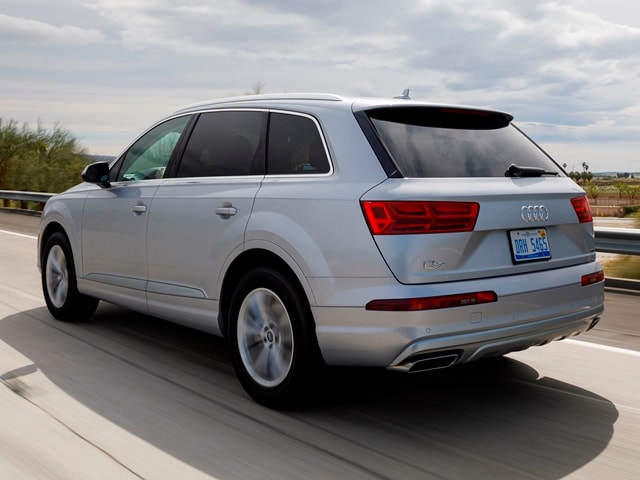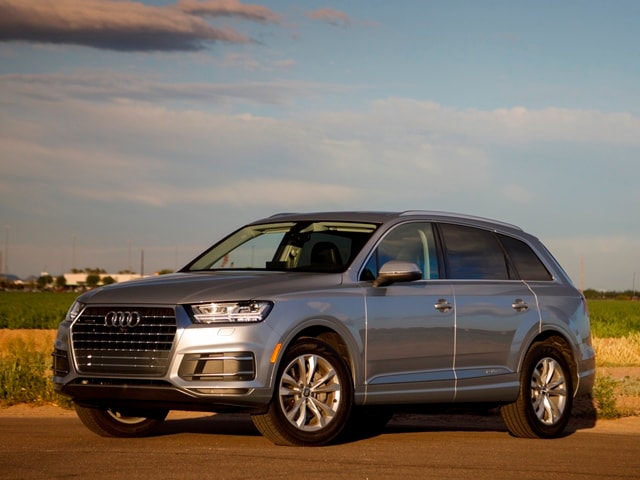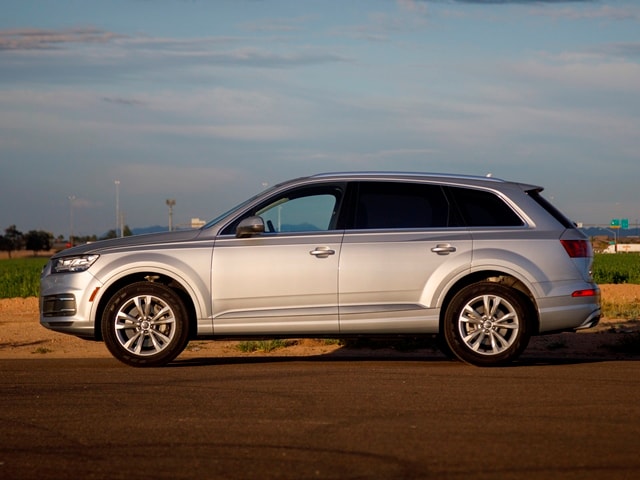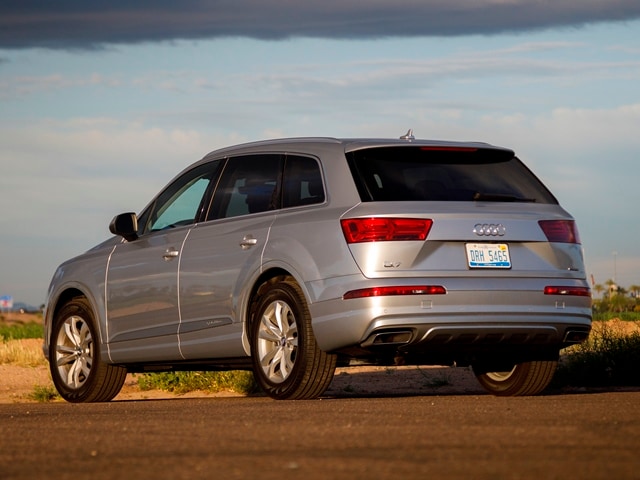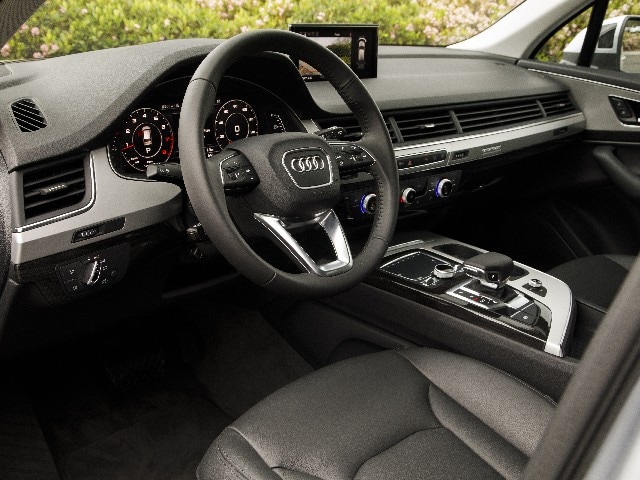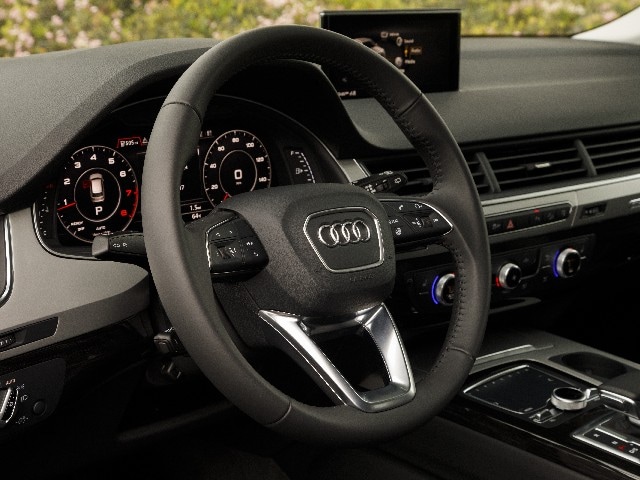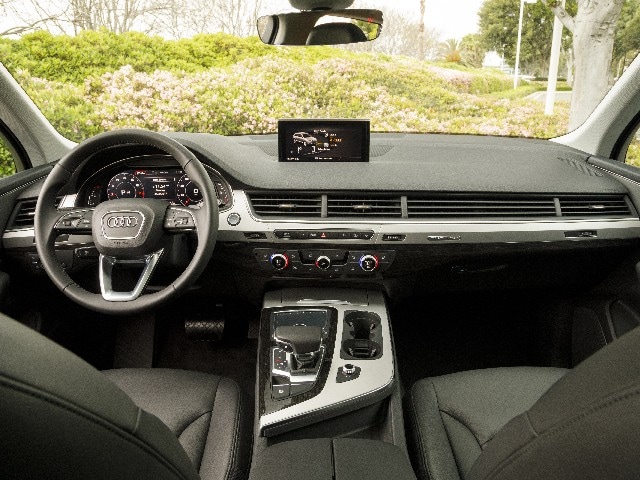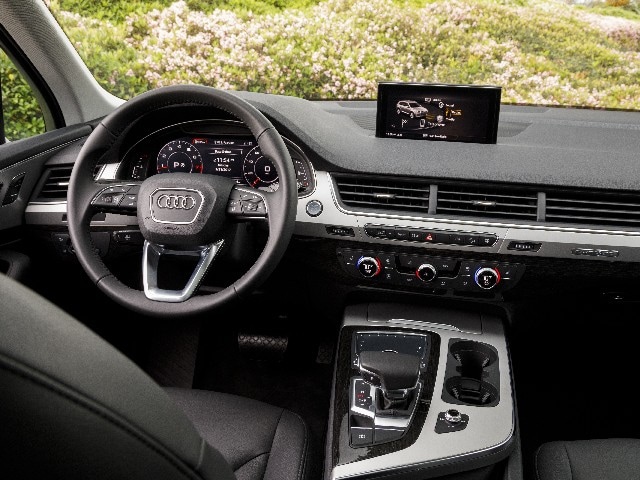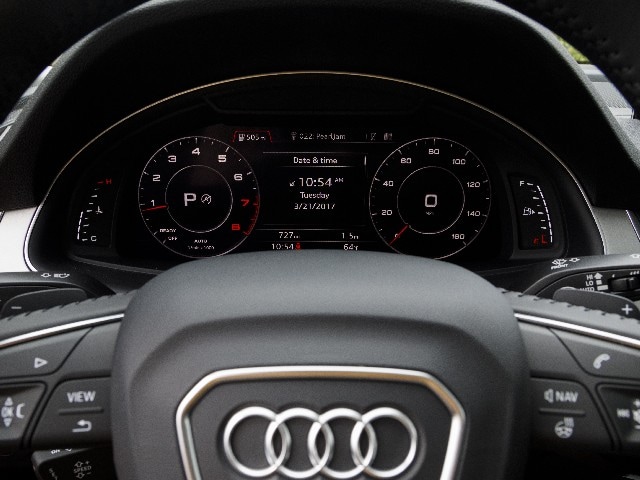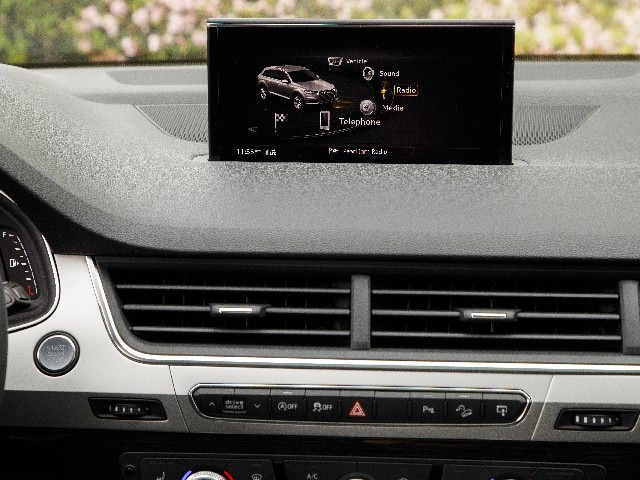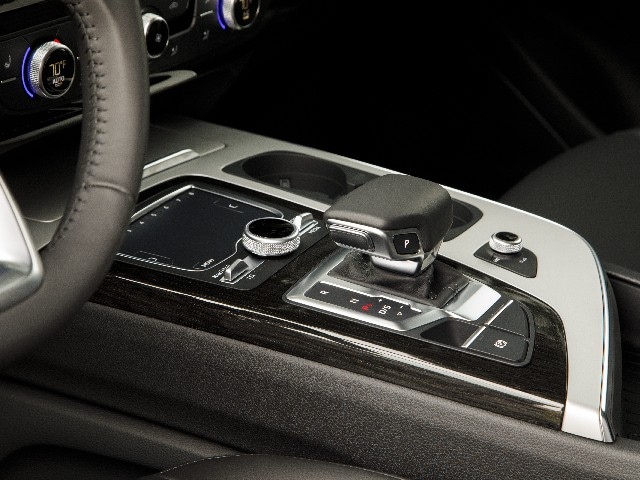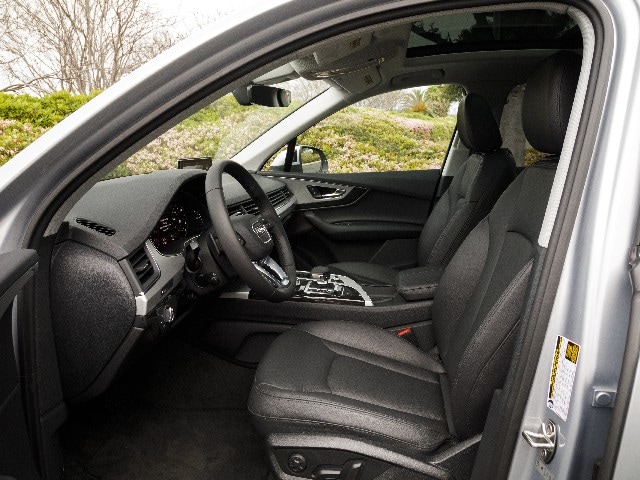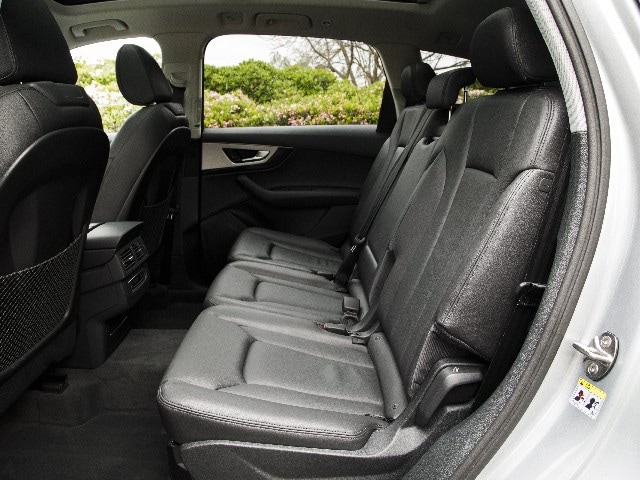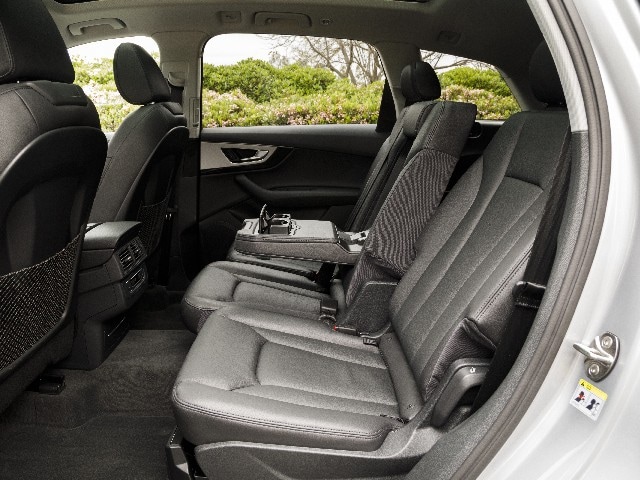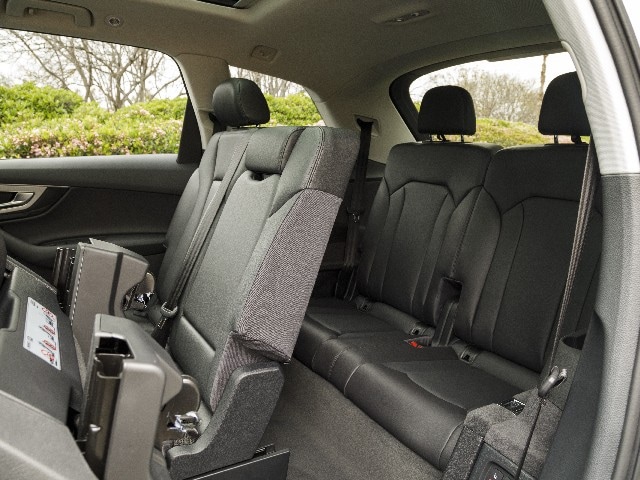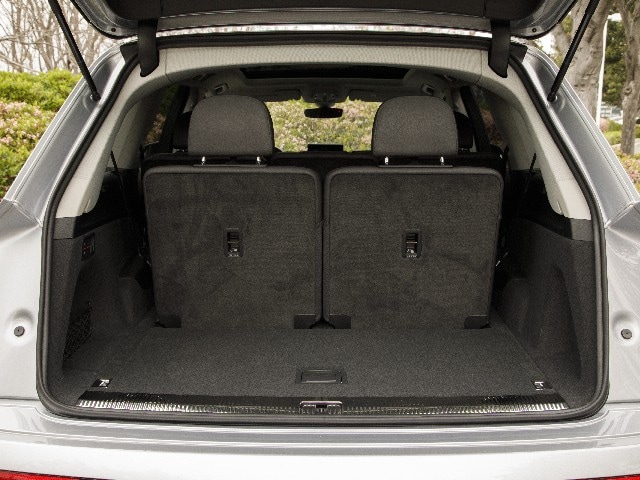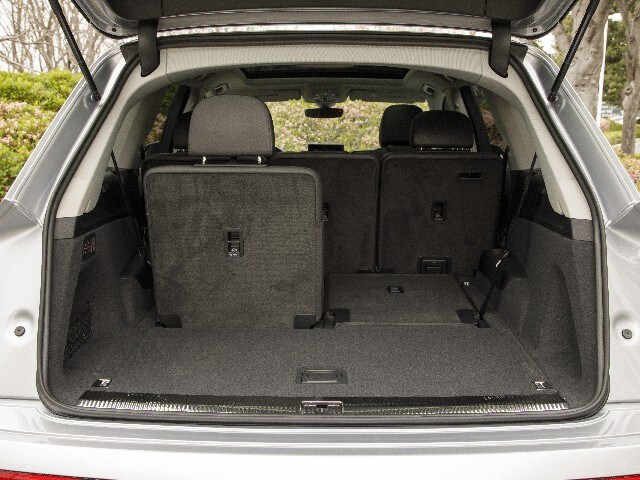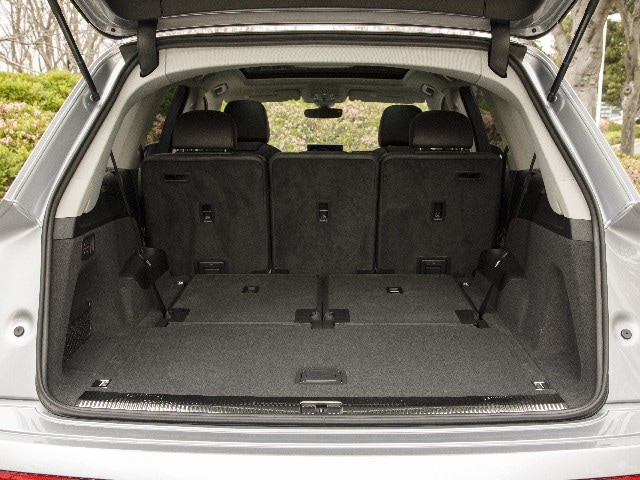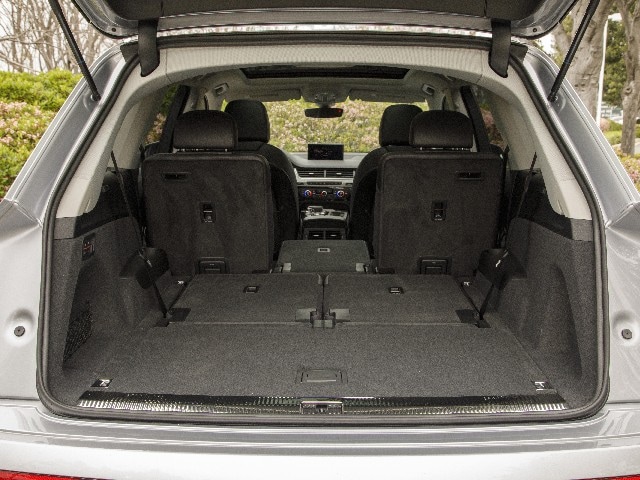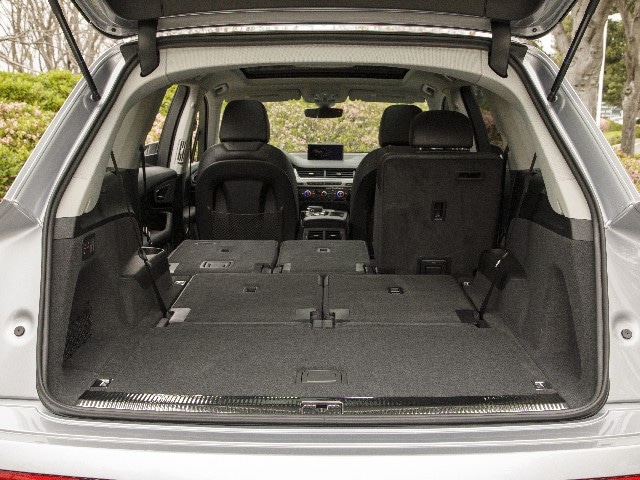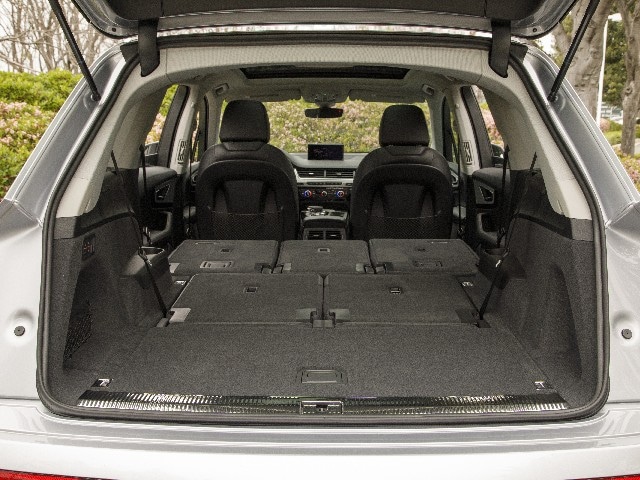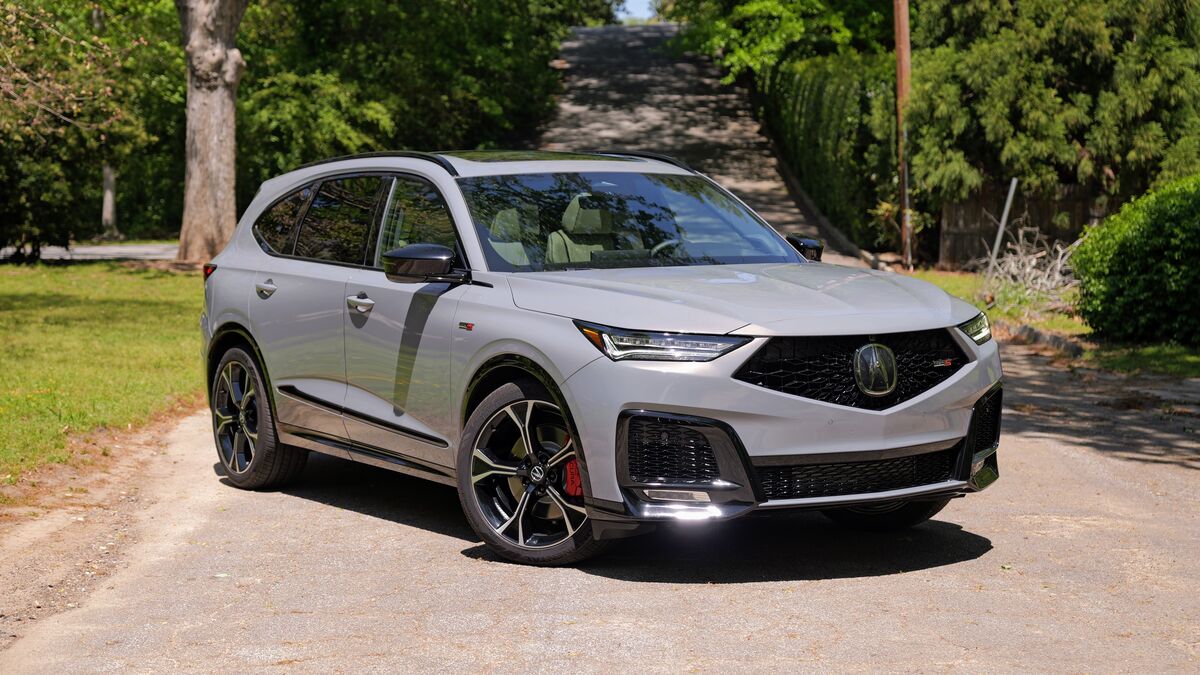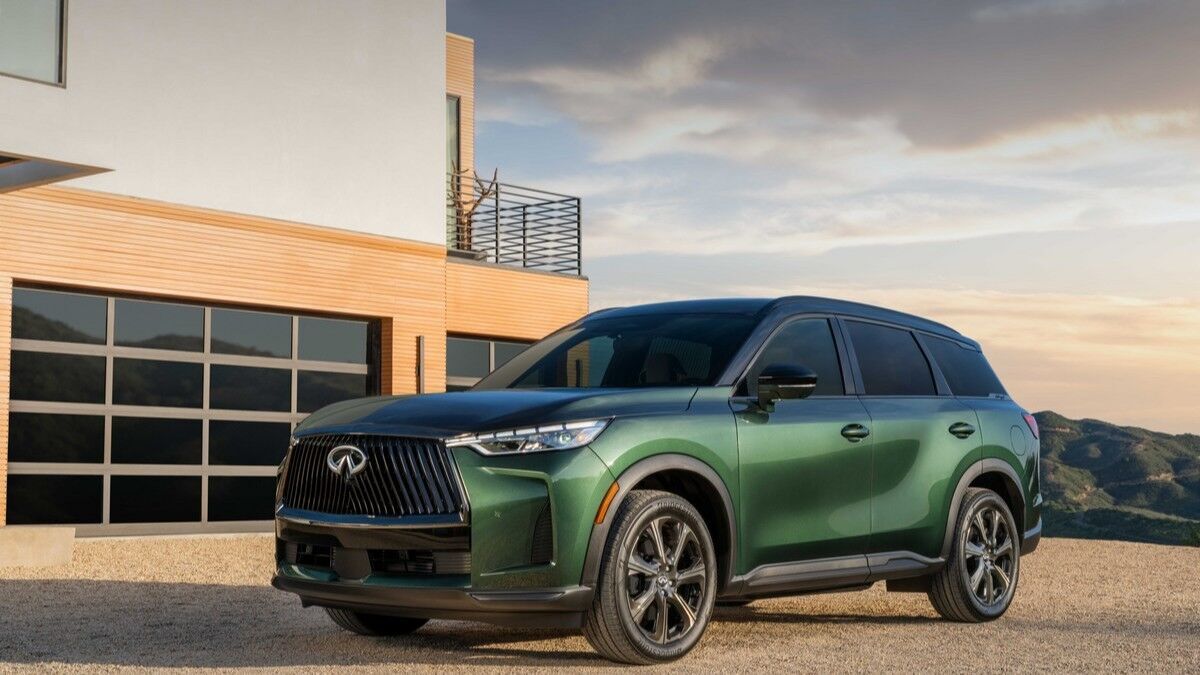Leaning toward style
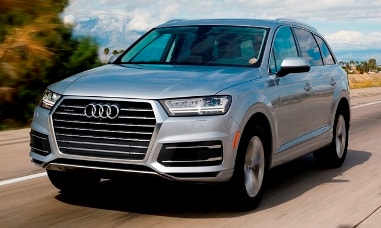
Starting Price: $49,950
Above Average: Style points for interior, exterior, infotainment
Below Average: Third row, off-the-line acceleration
Consensus: If you want a head-turner, this is it
Perhaps it doesn’t make sense to choose your SUV more for looks and style than for sheer cargo- and passenger-carrying versatility, but the success of the Audi Q7 shows a lot of luxury SUV customers are making that decision. After driving the Q7 for more than 700 miles in this comparison test with many of its newest competitors, we can’t say we disagree with the logic. The Q7’s thoughtfully composed exterior is a complement to any well-heeled buyer’s driveway, and the aura of tasteful, contemporary luxury extends seamlessly to the interior. As one of our testers said, “Awesome, modern-rich interior with two gorgeous displays. I wish every car had a volume knob placed as close to my volume fingers.” And in this day and age, getting the location of infotainment system controls (like the volume knob) right is an important distinction, a distinction Audi designers have a knack for. In a wide variety of driving conditions, the Q7 offers superior ride and handling, and it’s as quiet as the interior of a bank vault on Willie Sutton’s day off.
The simplest course is to start with weaknesses, because for 2017 the Audi Q7 doesn’t have many to single out. It is easy to throw stones at the small and hard-to-enter third row, so if you are going to use third-row seating for more than the occasional extra kid in the carpool, there are better choices in this comparison (Infiniti QX60 topping the list). Then there’s the perceived power lag of the 2.0-liter 4-cylinder engine and the somewhat recalcitrant stop/start system, but the power issues are solved if you opt for the higher-displacement 3.0-liter powerplant or (perhaps) simply leave the 2.0-liter in Sport mode at all times. (Of course, the first of those comes at significant penalty to your bank account and we can’t guarantee the second will give you the drivability you want.) Interestingly, our test Q7’s 2.0-liter engine didn’t deliver better fuel economy than other, more powerful vehicles in our test drive, maybe because we worked it so hard.
Leading the list of positives is the Q7’s incredibly handsome looks. The design just kills it, both inside and out. Completely redesigned for 2017, the Q7 is sleek, stylish, athletic and lighter in weight than its predecessor. But the Q7 also has inner beauty. Its interior is more elegant and roomier than before, and it is knee-deep in cool stuff, including Apple CarPlay and Android Auto, virtual cockpit instrumentation, a panoramic sunroof and standard tri-zone climate control. We liked the ride and handling of the previous Q7, but a new suspension improves the breed this time around.
2017 Audi Q7
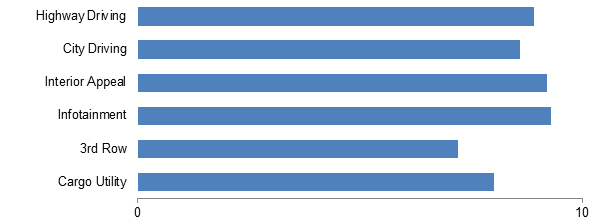
Highway Driving
All the competitors excelled on the highway, so the splits in the rankings are very narrow, but the Q7 was nominally third following the MDX and XC90. Fact is, on the highway the Q7 offers absolutely nothing to complain about. It is powerful, fast and essentially silent. Its excellent infotainment system is a great aid to navigating strange byways, and its intuitive operation means you can keep your attention on the road. If your highway driving includes stop-and-go commuting, the intelligent cruise control can take over many of the most tedious functions.
City Driving
The Q7’s easy-to-handle dimensions and its ability to park with a high degree of confidence won kudos from our testers. Again, the Q7 finished a nominal third behind the two Japanese entries in this category, but we expect its drivers will never complain about its in-city behavior, unless they mumble a few rude things about its sometimes clumsy stop/start system.
Interior Appeal
The Audi Q7’s interior doesn’t scream luxury; instead it has that subtle, Grace Kelly stylishness that never ages. The seats are comfortable, easy to adjust, and in this day of complication and mind-boggling obscurity, the controls are straightforward. We love the front seats, like the second row and have come to terms with the third row. The rearmost seating section is hardly commodious but it does fold out of the way with the touch of a couple buttons. A niggling complaint is the small cupholders. No Big Gulps in the Q7.
Infotainment
Previous editions of Audi’s MMI system have come in for deserved criticism, but we found hardly anything to dislike about the current version, including voice control that recognizes your voice, understands what you are saying and actually does what you want–essentially the opposite of a six-week-old puppy. While many competitive vehicles have a wide array of touchscreen-operated items, the Audi relies on a controller and a touchpad, though your fingers never need to stroke the touchpad to get information or entertainment to happen. New features include Apple CarPlay and Android Auto compatibility.
Rear Seat Room
The third row in the Q7 appears to have been sacrificed for style. Yes, there are two seats back there, but they are hard to enter, hard to exit and none too pleasant to occupy. Small kids will find them just fine, however. In contrast, the second row is quite comfortable and well-appointed.
Cargo Utility
If you buy the Q7 for its style, don’t expect it to haul like a big SUV, because it won’t. Our testers rated it near the bottom in this category, because it has very little cargo area behind the rear seats if the third row is in use. With the third row folded (the seats fold individually via a power-operated switch) the cargo space increases markedly but remains among the smallest in the category.
Fuel Economy
The turbocharged 2.0-liter 4-cylinder engine was a disappointment in fuel economy. It’s EPA rated to deliver 20 mpg city and 25 mpg highway, which landed it in a tie for second among this crew. But in our real-world test, it was second-thirstiest of the bunch. Should you opt for the pricier 3.0-liter version, you will enjoy the immense pleasure of 333 horsepower, but presumably suffer the slings and arrows of still less impressive fuel economy.
Resale Value
Audis typically hold their value pretty well, but the Q7 is up against some stellar resale competitors in this comparison. Due to its so-so resale value performance and reasonably high purchase price, it doesn’t fare well in the 5-Year Cost to Own measure. There are plenty of compelling reasons to choose a $60,000 Audi Q7 over a $50,000 Acura MDX, for instance, but just know that our 5-Year Cost to Own figures indicate that you might actually spend $15,000 more over the full buy-drive-sell ownership cycle. Style has its privileges…and its costs.
Inside and Out: 2017 Audi Q7

